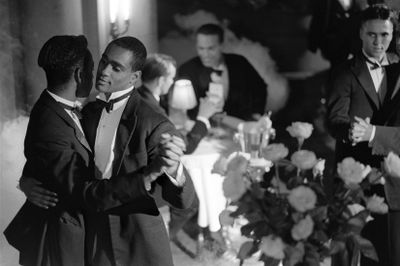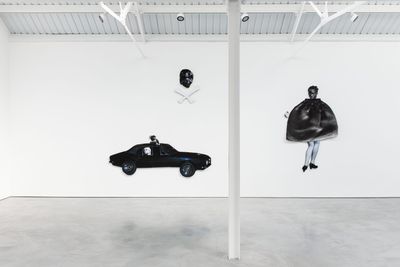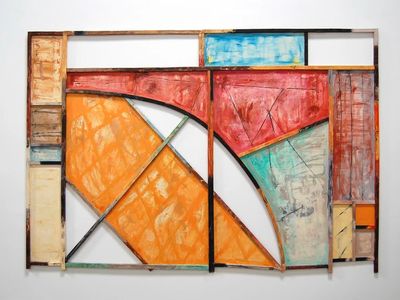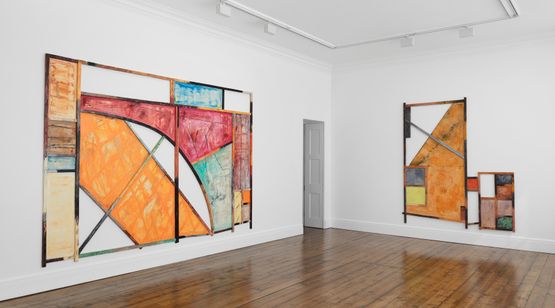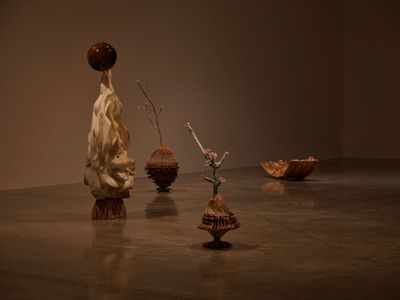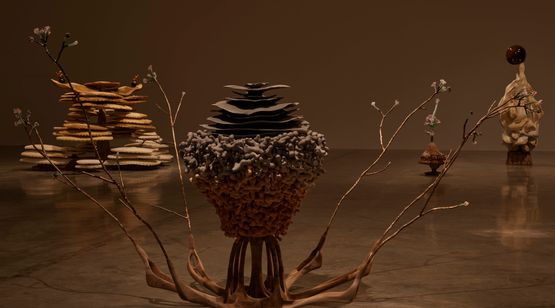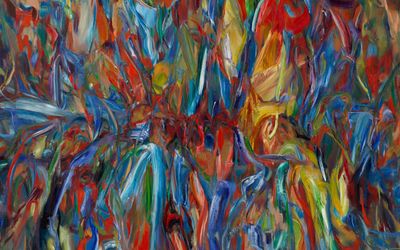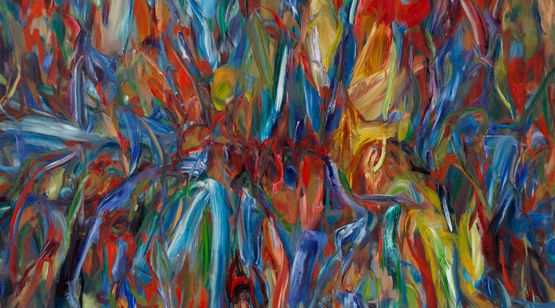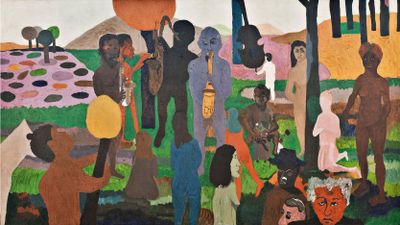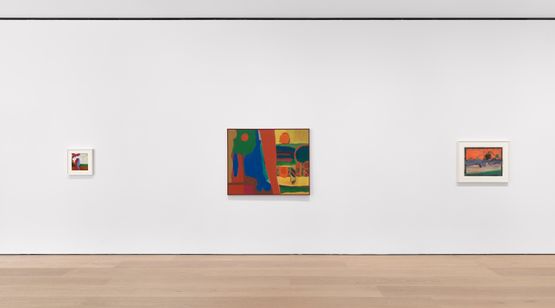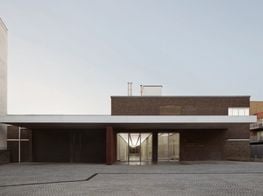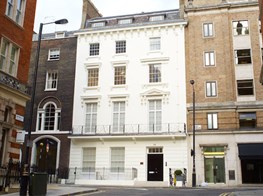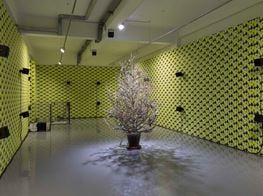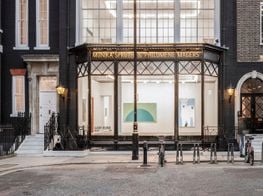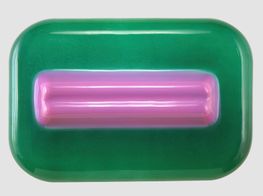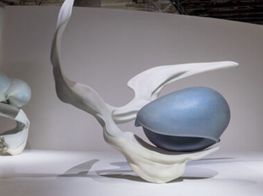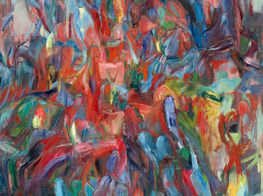Spring Lowdown: Eight Must-See London Exhibitions

Isaac Julien, The Lady of the Lake (Lessons of the Hour) (2019). Framed photograph on gloss inkjet paper mounted on aluminium. 160 x 213.3 cm. © Isaac Julien. Courtesy the artist and Victoria Miro.
Finally, things are brightening up in London, heralding a slew of noteworthy exhibitions across blue-chip and national institutions, alongside new names to watch. For the occasion, Ocula Magazine shares its selection of must-see exhibitions this spring.
Isaac Julien: What Freedom Is To Me
Tate Britain, Millbank
26 April–20 August 2023
Expect: cinematic explorations of Black and queer histories across the Atlantic, dealing with subculture, police brutality and desire.
From his earliest days as a Central Saint Martins student, Isaac Julien has pushed the envelope of filmmaking. The London-born artist uses the medium to patchwork forgotten histories and diasporic references from novelist Toni Morrison to cultural studies pioneer Stuart Hall and Black Britain's pirate radio stations.
Julien's first survey in the U.K. spans over 40 years of work, including early films from the Sankofa Film and Video Collective, a POC-led pioneer of reactionary Black film founded by the artist and other art students, to recent examples like Once Again... (Statues Never Die) (2022), an ode to the Harlem Renaissance's leading figure, Alain Locke.
Throughout, brave dissections of queer Black identity uplift those that came before him. This is especially so in Looking for Langston (1989), which archives the lives of an underwritten generation: the fierce novelist and activist James Baldwin; Essex Hemphill, a poet dealing with internal racism in the gay community; and Richard Bruce Nugent, an openly gay writer and painter from the Harlem Renaissance.
'It is beautiful enough to attract a wide audience, but at the same time it retains its integrity in terms of its political and cultural ideas,' Julien told Ocula Magazine in 2014.
Frida Orupabo: Things I saw at night
Modern Art, 4–8 Helmet Row
25 March–20 May 2023
Expect: a personal and eerie reckoning with racialised imagery as it looks back at viewers, switching the gaze in a bold reclamation of Blackness.
Frida Orupabo is anything but your typical artist. As a sociologist and former social worker that began documenting depictions of Blackness during her late teens, Orupabo's show gives a compelling account of what it feels like to be objectified or misrepresented, forcing audiences to consider their own position or complicity in colonial dynamics.
Orupabo, who works primarily with collage, as well as film and sculpture, was born and raised in Norway, in a small municipality. Her formative experiences of racism and cruel or overtly sexualised depictions of Black femininity inspired her to create her own.
With a Nigerian father who returned to his home country when she was three years old and a native Norwegian mother, Orupabo was made to feel alien among her white peers, who would ask prying questions about her origins. 'I was hungry for images that would resemble me,' she told Louisiana Museum of Modern Art in 2022.
Excavating mostly digital imagery from every side of the colonial gaze, Orupabo rigorously archives these images, often featuring Black women, and uses them to create digital collages that recast the Black body and its narratives, as her subject's deadened eyes follow viewers.
Craig Kauffman: Constructed Paintings 1973–1976
Sprüth Magers, 7A Grafton Street
14 April–20 May 2023
Expect: a lesser-seen side of the late Los Angeles hero, no shortage of his yellow and orange palette and an ever-irreverent take on painting.
Kauffman underwent a critical transformation from 1973 to 1976 with his 'Constructed Paintings', which stretch the medium of painting and his very canvas on a special form of wood, known as jelutong. Diptych, 1975, for example, jigsaws brilliant blocks and cut-outs of colour, separated and diced using his rudimentary scaffolding.
The series exemplified the artist's ongoing interest in luminous colour and unconventional forms, first explored in his eternally satisfying vacuum-formed sculptures rendered in myriad colours, as well as his light-reactive acrylics and fetishist stiletto drawings.
Despite this relentless push to unravel traditional methods, playful nods to traditional practice remain. Indeed, Kauffman often drew before painting, albeit in his own unorthodox manner that involved cutting materials first and using the edges to form his subject.
In addition to drawings, the show features traces of his old references—be it Japanese ceramics or the clunky-but-slick L.A. car culture. Even in the artist's absence, this exhibition does good work, revisiting his past to showcase his breadth and depth.
Marguerite Humeau: meys
White Cube Bermondsey, 144–152 Bermondsey Street
5 April–14 May 2023
Expect: speculation and mourning; Humeau takes a deep dive into nature, excavating ideas for an alternative world beyond.
Working at the intersection of science and art, Marguerite Humeau hypotheses a glorified backup plan in the face of impending doom—climate desecration and the resulting downfall of humanity included. True to her cutting-edge practice, she studies natural structures with forensic detail, using them as a springboard to envision her solution.
Sticking to her primary mediums of sculpture and sound, in addition to film, Humeau's immersive installation at White Cube crafts an interactive ecosystem that explores ideas of collectivity as a response to extinction.
Based on the artist's previous forays into the grotesque biology of ingestion and engulfment, the show will likely lean into strange, interior-exterior themes, if not disturbing mergers of prehistoric and futuristic lifeforms.
As a trained designer steeped in the world of nanotechnology and biotechnology, Humeau places forms typically deemed natural in close dialogue with clinically austere, lifeless objects. 'I explore ideas of life and death, and what it means today to be somewhere in between,' she told Tate in 2017. It's a dark approach but one rooted in optimism, enlightening audiences on the violence and potential of human life.
Sabine Moritz: Under the Skin/ Heart of Drought
Pilar Corrias, 2 Savile Row/ 54 Eastcastle Street
27 April–17 June 2023
Expect: thick brush strokes, a poetic palette, and a headstrong development in the Cologne-based artist's meditations on perspective, grief, and serendipity.
Spread across two galleries, Sabine Moritz's show has a different name in each location. Treating the works as a continuous conversation, this curatorial choice shows her looking inwards and outwards, dependent on the viewer's vantage point.
Previously referencing newspaper clippings and photographs in her work, Moritz largely works as a painter, although her drawings have also been well received, featured in the book Helicopter (2014), authored in collaboration with curator Hans Ulrich Obrist.
Born and raised in East Germany before moving to West Germany later in her youth, Moritz plays with concepts of movement and memory, and how the latter is distorted in time. The grey, communist neighbourhood in Jena, where she first lived, for example, informs much of her work, as does the loss of her father, a chemist who died in an industrial accident.
In this way, Moritz's liberal and viscose daubing of paint is her means of freezing what is lost, the abstract paintings her keepsake. She approaches painting with freedom but does so with considered deliberation. When Obrist asked what role coincidence plays in her work, she responded: 'Apparently, a really big one. Sometimes that big that I'm scared myself.'
Pourea Alimirzaee: Tear Gas
The Artist Room, F3, 76 Brewer Street
27 April–20 May 2023
Expect: a moving homage to the defiance of Iranian protesters living under draconian laws that uphold inequality for women across watercolour and oil portraits.
For his debut show in the U.K., Tehran-born Iranian artist Pourea Alimirzaee showcases politically charged and gender-blurring portraits that feature long-haired figures in different states, using gender ambiguity to undermine fragile masculinity.
Living and working in Vienna after studying at the Academy of Fine Arts Vienna, Alimirzaee himself dons luscious locks much like those in his paintings. For him, art is a salve to the darkness he had witnessed, allowing him to find hope beyond his experiences.
'It was always hard for me to find my own spot in society,' he says. 'I always was questioning it, but I started to question my masculinity when I got deeper in my first relationship.'
While he didn't go straight into art—in fact, he spent eight years studying computer science in Tehran, before joining the Vienna Conservatory to study bass—he is clear on his calling. Rejecting conservative strictures, he transforms everything that rankles with him into positivity.
For Alimirzaee's show, the Woman, Life, Freedom movement unfolding in Iran is a core reference, particularly the public cutting of hair and removal of hijabs in honour of Jina Amini, who died suspiciously after being arrested for not following governmental hijab regulations.
So let us all be citizens too
David Zwirner, 24 Grafton Street
20 April–26 May 2023
Expect: a radical offering of Black art from past and present that continues the evolving legacy of figurative-expressionism's maverick, Bob Thompson.
Showing in conjunction with Bob Thompson's New York survey So let us all be citizens at David Zwirner, this group show departs from the African American painter's indelible mark on figurative painting and brings together work by artists including but not limited to Chris Ofili, Lewis Hammond, and fellow Fauvist adapter, Michael Armitage.
Given the context of Thompson's work, which took cues from the Old Masters and tweaked them with his own Jazz-inspired inflexions, the group show revels in cross-cultural pollination, paying special heed to Thompson's influence on Black artists from the mid-century onwards.
Spanning contemporary early-career and established artists, the result chimes with Thompson's game-changing practice, ditching easy disciplinary definitions. As he told the Louisville Gazette in 1959, 'I cannot find a place nor category in which to put my paintings nor a name to call them.'
The show is curated by art world maven Ebony L. Haynes, who helms the Black-led David Zwirner offshoot gallery in New York, 52 Walker. The gallery opts for atypical programming methods, never showcasing installation photography online, requiring direct engagement from the audience. While it remains to be seen whether this specific show will follow suit, it's better to be safe than sorry. All the more reason to visit.
Samuel Ross: LAND
White Cube Bermondsey, 144–152 Bermondsey Street
5 April–14 May 2023
Expect: an exploration of Black British complexity through a confrontational landscape of sculpture and painting enhanced with temperature, smell, and sound manipulation.
Renowned for his fashion brand, A-COLD-WALL*, named after the sensation of touching the walls of brutalist social-housing estates from his childhood, Samuel Ross began his career in product design, later catching the eye of the late Virgil Abloh.
Ross worked at the latter's fashion label Off-White as the brand's first-ever intern and later design assistant. Since then, his meteoric rise has spanned everything from collaborations with Nike and Hublot to furniture design showcased at Design Miami 2021.
Little wonder then that this South London-born polymath would eventually land a solo exhibition at White Cube, continuing a practice that breaks away from canonical distinctions. With the body of abstract paintings and sculptures on view, Ross reimagines Bauhaus and modernism through his working-class lens.
As a third-generation migrant whose grandparents arrived in England as part of the Windrush Generation, Ross uses this show to evoke feelings of displacement and confusion, similar to those he felt growing up.
He ascribes this feeling to academic W.E.B. Du Bois' concept of double consciousness, where Black people view themselves through the eyes of the white majority. 'It's a reality that most go through, but understanding how to harness this double consciousness and not go to war with it is important but difficult,' he says in a 2021 interview with 032c. —[O]

